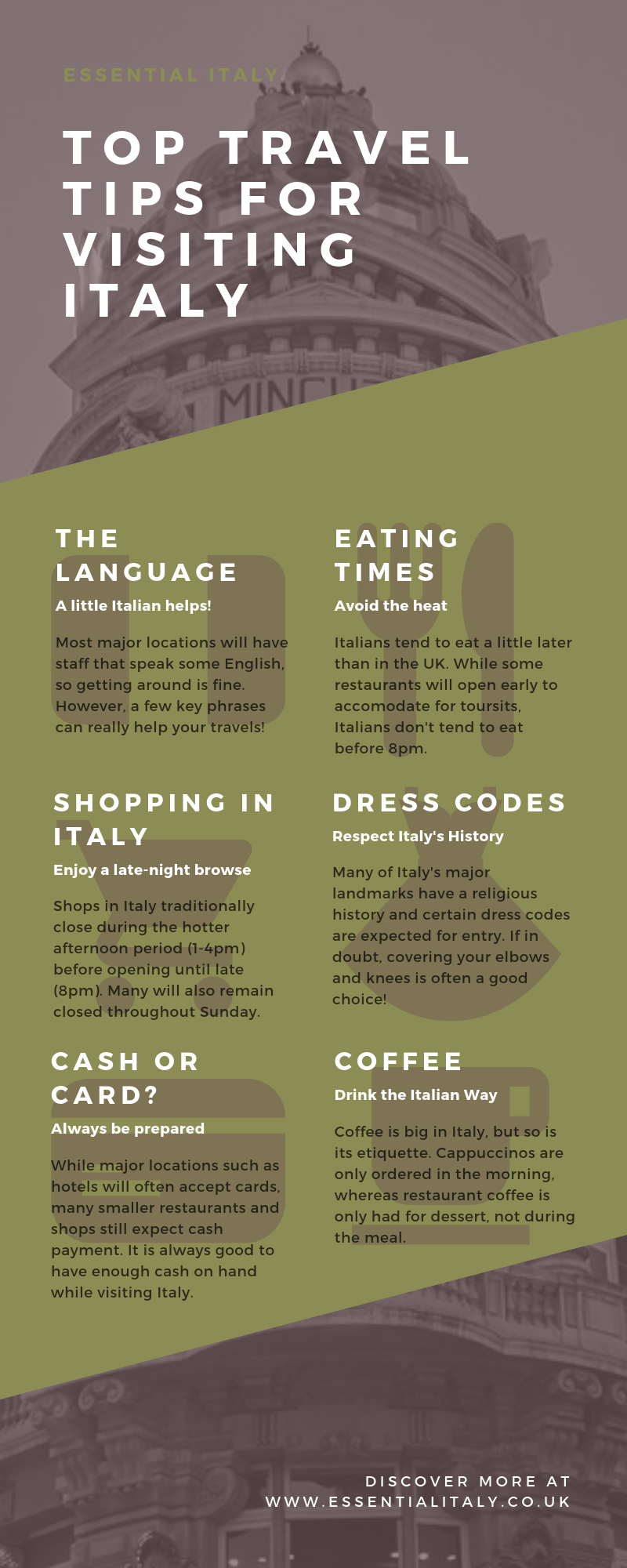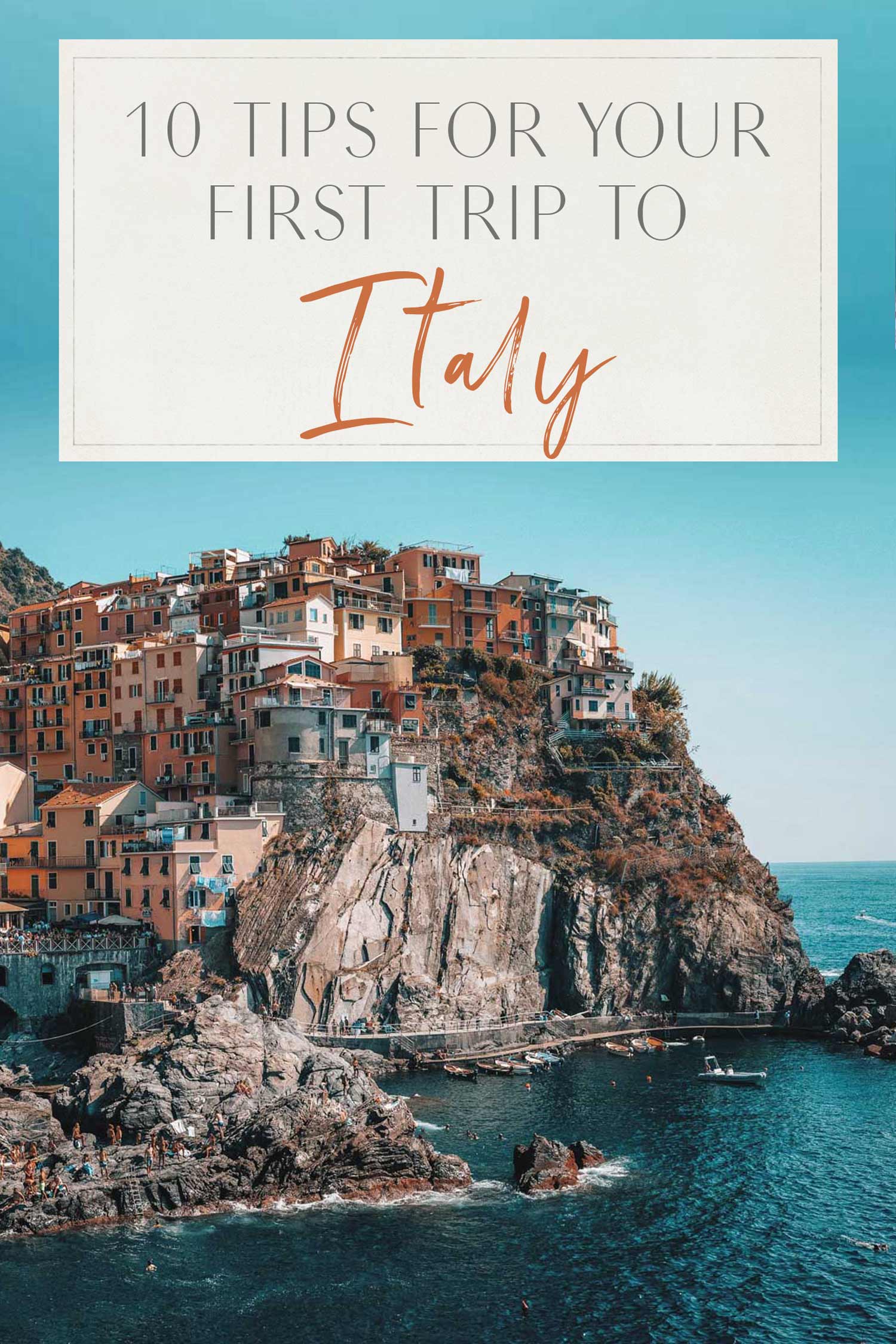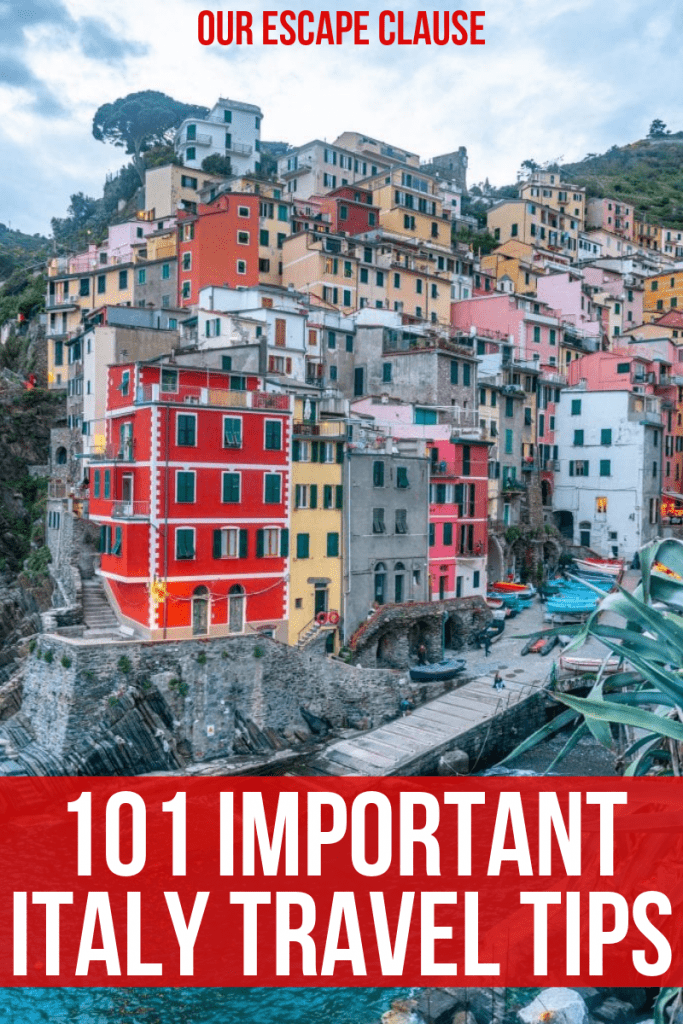Italy is a dream destination for many travel enthusiasts. With its breathtaking landscapes, rich history, world-class cuisine, and vibrant culture, there’s so much to explore! I’ve traveled across this beautiful country multiple times and have compiled my best tips and advice to help you navigate your Italian adventure. Whether you’re planning a romantic getaway, a family holiday, or a solo expedition, these insights will enhance your travel experience in Italy.
Why Visit Italy?
Italy offers a unique blend of historical sights, artistic heritage, stunning coastlines, and delicious food. From the iconic canals of Venice to the rolling hills of Tuscany, and the ancient ruins of Rome, each region has its distinct charm. Here are a few compelling reasons to put Italy on your travel itinerary:
- Rich historical landmarks: Italy is the cradle of Western civilization, home to countless UNESCO World Heritage Sites.
- Culinary delights: Experience authentic Italian cuisine, from pizza to pasta, and regional specialties.
- Art and culture: Immerse yourself in the arts, with museums and galleries housing masterpieces from famous artists.
- Stunning landscapes: Enjoy breathtaking views of mountains, lakes, beaches, and countryside.
Planning Your Trip: Essential Travel Tips
Best Time to Visit Italy
The best time to visit Italy depends on your preferences. Generally, spring (April to June) and fall (September to October) are ideal for pleasant weather and fewer crowds. Here’s a breakdown:
| Season | Pros | Cons |
|---|---|---|
| Spring | Beautiful blooms, pleasant weather, fewer tourists | Higher prices during peak weeks (e.g., Easter) |
| Summer | Festivals and events, lively atmosphere | High temperatures, crowded tourist areas |
| Fall | Harvest festivals, great weather, fewer crowds | Cooler temperatures in late October |
| Winter | Christmas markets, lower prices (except holidays) | Cold weather, some attractions closed |
Visa Requirements for Italy
Check if you need a visa to enter Italy. Citizens of the EU, USA, Canada, Australia, and several other countries can enter Italy without a visa for up to 90 days. Make sure your passport is valid for at least three months beyond your planned departure.
Getting Around Italy
Italy’s public transportation network is extensive and can be a convenient way to travel. Here are some options:
- Trains: Fast and efficient, connect major cities and regions. Consider a Rail Pass for multiple journeys.
- Buses: Useful for reaching smaller towns and regions not served by trains.
- Car rentals: Great for exploring the countryside; however, familiarize yourself with local driving regulations.
- Walking: Many historic towns are pedestrian-friendly, allowing you to soak in the local atmosphere.
Top Destinations in Italy

Rome: The Eternal City
Rome is a vibrant city that beautifully marries ancient history with modern life. Highlights include:
- The Colosseum: A must-visit ancient amphitheater.
- The Vatican City: Home to St. Peter’s Basilica and the Sistine Chapel.
- Trastevere: A charming neighborhood with cobblestone streets and authentic restaurants.
Florence: The Heart of the Renaissance
Florence is known for its art, architecture, and history. Don’t miss:
- The Uffizi Gallery: One of the world’s finest art museums.
- Duomo: Climb to the top for stunning city views.
- Ponte Vecchio: The oldest bridge in Florence, lined with shops.

Venice: The City of Canals
Venice’s unique waterways create a magical experience. Key attractions include:
- St. Mark’s Basilica: A stunning cathedral with incredible mosaics.
- Gondola rides: A classic way to explore the city.
- Burano: A nearby island famous for colorful houses and lace.
Culinary Adventures: What to Eat in Italy
Italian cuisine is diverse and regional. Here are some must-try dishes:
Regional Specialties
- Pizza Napoletana: Originating from Naples, it’s a classic must-try.
- Pasta alla Carbonara: A Roman specialty made with spaghetti, eggs, cheese, and pork.
- Risotto alla Milanese: A creamy risotto with saffron from Milan.
- Gelato: Italy’s famous ice cream, available in countless flavors!

Dos and Don’ts of Italian Culture
Dos
- Do greet people with a friendly “Ciao” or “Buongiorno”.
- Do try to speak a few Italian words; locals appreciate the effort!
- Do respect meal times – Italians typically eat dinner late (9 PM or later).
Don’ts
- Don’t rush through meals; savor the experience.
- Don’t wear beachwear outside of coastal areas.
- Don’t expect restaurants to serve tap water; bottled water is the norm.

Travel Safety Tips for Italy
Italy is generally safe for tourists, but like any destination, it’s wise to stay vigilant. Here are some safety tips:
- Keep your belongings secure and be cautious of pickpockets in crowded areas.
- Use reputable transportation services, especially at night.
- Stay informed about local customs and avoid controversial topics, particularly in rural areas.
Accommodation Options: Where to Stay in Italy
Italy offers a wide range of accommodation options to suit every budget:
Types of Accommodation
- Hotels: From luxury to budget, hotels are widely available in all major cities.
- Hostels: Great for budget travelers and backpackers.
- B&Bs: A more personal touch, often run by locals.
- Vacation Rentals: Consider platforms like Airbnb for unique stays.

Pros and Cons of Different Accommodations
| Accommodation Type | Pros | Cons |
|---|---|---|
| Hotels | Consistent services, facilities, and locations | Can be expensive, especially in tourist areas |
| Hostels | Affordability, social atmosphere | Shared facilities, less privacy |
| B&Bs | Personal touch, local insights | Varied quality, limited amenities |
| Vacation Rentals | Home-like convenience, unique locations | Variable quality, less oversight |
Packing Essentials for Your Italy Trip
What you pack for Italy can vary depending on the season and activities, but here are some essentials:
- Comfortable walking shoes – you’ll do a lot of exploring on foot!
- A light jacket or sweater for cooler evenings, especially in spring and fall.
- A travel guide or app to help navigate Italian cities.
- Portable charger for your electronic devices.
- Adapters for European outlets.

FAQs About Traveling in Italy
What is the best way to travel between cities in Italy?
The train system in Italy is highly efficient. High-speed trains like Trenitalia and Italo connect major cities, making it easy to travel across the country.
Is it safe to drink tap water in Italy?
Yes, tap water is safe to drink in Italy. Many cities even have public drinking fountains where you can refill your water bottle.
Are credit cards widely accepted in Italy?
Most businesses accept credit cards, particularly in larger cities. However, it’s advisable to carry some cash, especially in smaller towns or markets.

Conclusion: Your Italian Adventure Awaits!
Italy is a treasure trove of experiences waiting to be explored. With a little preparation and a spirit of adventure, you’ll create unforgettable memories in this enchanting country. From the bustling streets of Rome to the tranquil landscapes of Tuscany, the diverse offerings of Italy ensure that there’s something for every traveler. Buon viaggio!